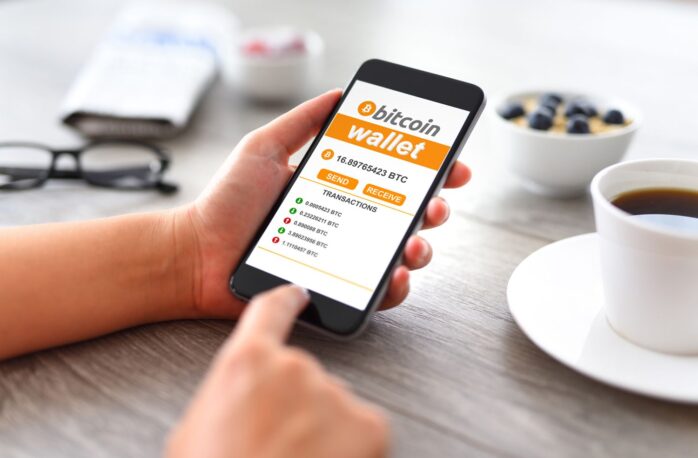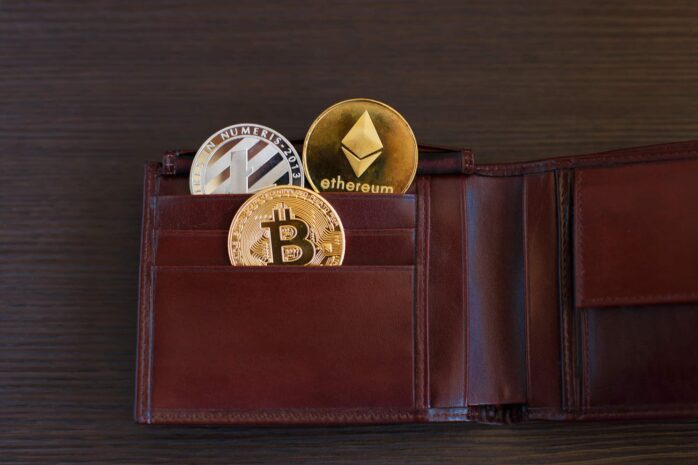Cryptocurrency has gone from a niche concept to a worldwide phenomenon in a matter of days. Nearly everyone has heard of the term or has a broad grasp of what it means in the last two years. Because of the popularity of Bitcoin, it has become necessary for consumers to keep their currencies in a safe place.
The introduction of a crypto wallet was the solution to this problem. A crypto wallet is comparable to a regular wallet in that both provide secure storage space for your funds.
The similarities between a wallet and a cryptocurrency wallet end there. A user cannot store bitcoin or any other cryptocurrency unless they have a crypto wallet. There are numerous crypto wallets available, each with its own set of security features. A wallet app’s main function is to store a private key. This secret key’s purpose is to provide the user access to their crypto.
Crypto wallets have become more common as cryptocurrency has grown in popularity. This article will walk you through the process of creating a bitcoin wallet.
What is the Definition of a Cryptocurrency Wallet?

A cryptocurrency wallet, also known as a bitcoin wallet or crypto wallet, works similarly to a typical wallet, but it stores proof of your digital cash rather than paper currency.
A cryptocurrency wallet keeps track of the public and private keys needed to buy bitcoin and other cryptocurrencies, as well as provides digital signatures that confirm each transaction. These digital wallets may take the form of a gadget, a program on an app or a website, or a service provided by cryptocurrency exchanges.
In order to trade or spend cryptocurrency, you’ll need to maintain your private key safe and secure.
Click here to start trading cryptocurrency.
Types of Cryptocurrency Wallet
You can use your computer or mobile device to access various sorts of software crypto wallets. Which one is ideal for you depends on your unique circumstances, but here’s a rundown of the most prevalent sorts.
-
Desktop Wallets
Desktop wallets are applications that run on your PC and hold all of your cryptocurrencies. The benefit of a desktop wallet is that you have complete control over your assets, so you won’t have to worry about a third party freezing or losing your money. However, security is also your duty, so you’ll need to secure and back up your wallet, as well as ensure that your computer is malware-free.
-
Mobile Wallets
Mobile wallets are apps that store and manage your bitcoin funds on your smartphone. For face-to-face payments and the use of QR codes for speedy purchases, mobile wallets for iOS and Android operating systems are the most convenient. You’ll be in charge of backing up your device, just like with desktop wallets, to protect your digital cash from damage, theft, or loss.

-
Hardware Wallets
Hardware wallets are physical devices that are also referred to as “cold wallets” or “cold storage wallets.” They resemble a USB drive in appearance. This device stores your private key for using a blockchain to access your cryptocurrency.
Many consider a hardware wallet to be the safest option to store cryptocurrency because it is not connected to the internet and exists in physical form. Without this device in hand, a hacker halfway around the world won’t be able to access your crypto.
What is the Best Crypto Wallet for you?
A mix of hot wallets for quick trading or purchases and cold wallets to secure the majority of a cryptocurrency trader’s cryptocurrency assets is recommended for cryptocurrency traders with a large number of cryptocurrency assets.
Regardless, assets like bitcoin are known for their high volatility. Always trade or hold less than you can afford to lose, is a smart rule of thumb.
Setup of a Hardware Wallet
The most time-consuming method is usually setting up a hardware wallet, but it is also the most secure. Because your private keys will be stored on an offline device separate from your laptop, mobile phone, or another computer, this added security is achievable. These hardware wallets are far more secure than internet wallets due to the offline nature of the hardware wallet, which makes it less vulnerable to virus attacks from hackers, keeping your cryptocurrency holdings safe.
After you’ve bought a physical storage device, you’ll need to set it up using the instructions that came with it. This usually entails three steps: installing the hardware’s associated software on your computer, writing down the recovery pass for your private keys, and connecting the hardware device to your computer.
Setup of a Desktop Wallet

A desktop wallet is comparable to a mobile wallet in terms of setup. After you’ve chosen your cryptocurrency wallet program, all you have to do now is run it to begin the setup process.
Desktop wallet software, like mobile wallet software, may prompt you to create a backup of the passcode linked with your private keys.
Desktop wallets usually come with more detailed portfolio tracking graphs and charts, allowing you to keep track of the value of your assets in a variety of ways.
Setup of a Mobile Wallet
It is significantly simpler to create a mobile wallet. The first step is to download a mobile cryptocurrency wallet from the app store connected with your device.
You’ll be able to take cryptocurrency payments almost instantaneously with most mobile wallets. During the setup procedure, the only thing you should do is make a physical backup of your private keys. This backup is often a 12 or 24-letter passphrase known as your recovery phrase.
While not all crypto wallets require this step, it is strongly recommended because you could lose access to your assets if your phone is misplaced or stops working properly.
Keep in mind that when you lose your password in the world of cryptocurrencies, there is no one to turn to for assistance.
Conclusion: Do I require a cryptocurrency wallet to trade Bitcoin?

Yes. While many exchanges provide or recommend crypto wallets, you’ll need a wallet address to buy or trade bitcoin or other cryptocurrencies. A majority of these digital wallets are password-protected, and many also include encryption, two-factor authentication, and other security measures.
The post Steps for Creating a Cryptocurrency Wallet appeared first on FotoLog.
from FotoLog https://ift.tt/3zPtCqf
via IFTTT


0 Comments